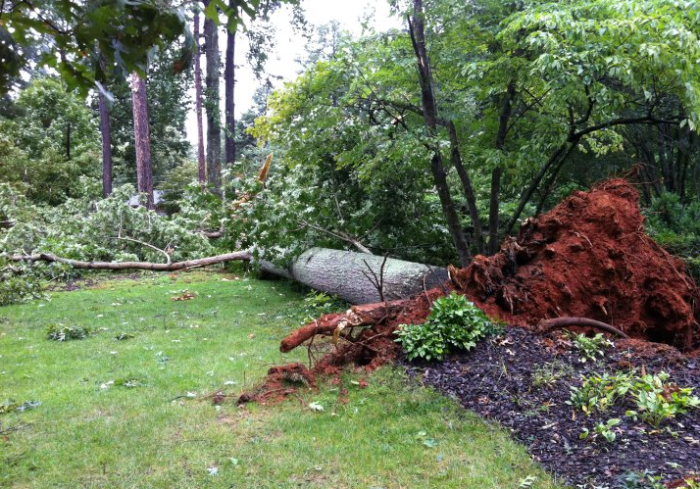Archive for January 2012
Cocoa Programming for Mac OS X, 4th Edition: Chapter 3 Challenge
Howdy. I previously wrote some entries about the solutions to the challenges in the Cocoa Programming book, 3rd Edition, by Aaron Hillegass. The 4th edition is good. Like the first edition, however, I find the description of the challenges to be a little vague.
I think he does that on purpose. The solutions usually are simpler than they appear.
The Chapter 3 challenge is, “NSDateFormatter’s setDateFormat: to customize the format string on the date objects in your LotteryEntry class.”.
Here’s what you do.
- Look for
NSDateFormatterin the Xcode documentation. Once you find it, search for thesetDateFormat:method. You’ll find that you have to send a string to the method. Perhaps most useful is a link at the top of the class to the “Data Formatting Guide.” Once there, click to the “Date Formatters” page. Aha… here’s where the good info it. - Search again for the method name — but only search on this page — for
setDateFormat:. You’ll find examples of the type of string that you can use for the date formatter. Copy one of those strings. It will look something like:@"yyyy-MM-dd 'at' HH:mm"or@"yyyy'-'MM'-'dd'T'HH':'mm':'ss" - Open LotteryEntry.m in your editor window and find the
- (NSString *)descriptionmethod implementation. - What you’re going to do is to replace the formatting that you entered during the chapter with your new format. Your previous method looked like:
- (NSString *)description
{
NSDateFormatter *df = [[NSDateFormatter alloc] init];
[df setTimeStyle:NSDateFormatterNoStyle];
[df setDateStyle:NSDateFormatterMediumStyle];
NSString *result;
result = [[NSString alloc] initWithFormat:@"%@ = %d and %d",
[df stringFromDate:entryDate],
firstNumber, secondNumber];
return result;
}
- You want to replace the messages that your sending to your date formatter. Your new method should look like this (with the date string you found):
- (NSString *)description
{
NSDateFormatter *df = [[NSDateFormatter alloc] init];
[df setDateFormat:@"yyyy-MM-dd 'at' HH:mm"];
NSString *result;
result = [[NSString alloc] initWithFormat:@"%@ = %d and %d",
[df stringFromDate:entryDate],
firstNumber, secondNumber];
return result;
}
That’s it! Run your program and look at the log to see the new format. You can browse through the documentation a bit more to learn more about creating custom formats.
Paperclip, S3 & Delayed Job in Rails on Heroku – Jan 2012
Edit: I forgot to mention here that with Paperclip 2.4.5 you have to use the ‘paperclip-aws’ gem in order for Paperclip to work with Amazon’s newer ‘aws-sdk’ gem. That is no longer true with Paperclip 2.5.
I followed this good tutorial on how to push paperclip image processing to the background with delayed_job. My Rails app is deployed to Heroku on the cedar stack. I’ve had problems with the NoMethod errors using delayed_job 3.0.0, so I downgraded to 2.1.4. Also using paperclip version 2.4.5. In the end, I found that I could ditch the struct presented in the aforementioned tutorial and just call handle_asynchronously on my reprocessing method. This is what the codes looks like:
class Image < ActiveRecord::Base
attr_accessible :profile_pic,
:caption,
:note,
:pic_file_name,
:pic_content_type,
:pic_file_size,
:pic_updated_at,
:pic,
:pic_attributes,
:processing
belongs_to :imageable, :polymorphic => true
# Added for paperclip-aws
def self.s3_config
@@s3_config ||= YAML.load(ERB.new(File.read("#{Rails.root}/config/s3.yml")).result)[Rails.env]
end
has_attached_file :pic,
:styles => {
:large => "500x500>",
:thumb => "100x100>",
:tiny => "50>x50>",
:smallest => "24>x24>" },
:default_url => '/:attachment/:style/missing.png',
# Added for paperclip-aws
:storage => :aws,
:s3_permissions => :authenticated_read,
:path => "images/:id/:style/:filename",
:s3_credentials => {
:access_key_id => self.s3_config['access_key_id'],
:secret_access_key => self.s3_config['secret_access_key']
},
:bucket => self.s3_config['bucket'],
:s3_protocol => "https"
validates_attachment_content_type :pic, :content_type => [ /^image\/(?:jpeg|gif|png)$/, nil ]
# How to implement on Heroku with processing in the background
# http://madeofcode.com/posts/42-paperclip-s3-delayed-job-in-rails
# cancel post-processing now, and set flag...
before_pic_post_process do |image|
if !image.processing && image.pic_changed?
image.processing = true
false # halts processing
end
end
# call method from after_save that will be processed in the background
after_save do |image|
if image.processing
processImageJob(image)
end
end
def processImageJob(image)
image.regenerate_styles!
end
handle_asynchronously :processImageJob
# generate styles (downloads original first)
def regenerate_styles!
self.pic.reprocess!
self.processing = false
self.save(:validations => false)
end
# detect if our source file has changed
def pic_changed?
self.pic_file_size_changed? ||
self.pic_file_name_changed? ||
self.pic_content_type_changed? ||
self.pic_updated_at_changed?
end
end



